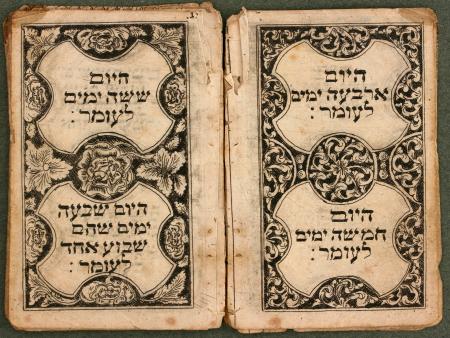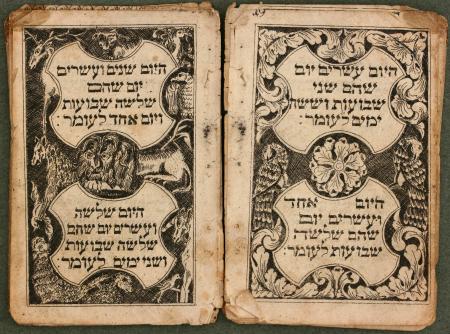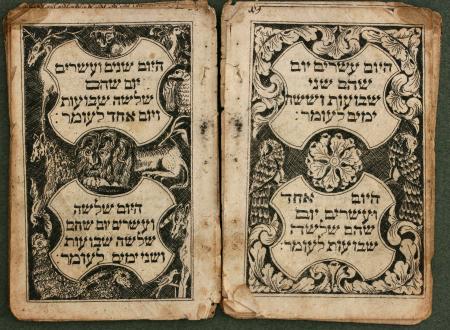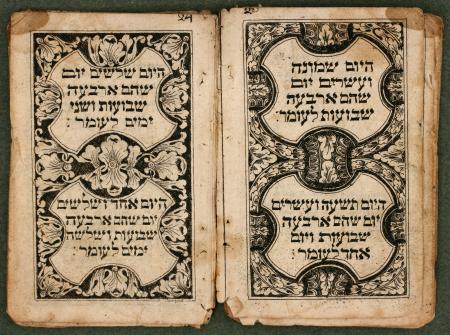Obj. ID: 39123
Jewish printed books Seder Sefrat ha-'Omer, Nitra, 1834

This text was prepared by William Gross:
In the 19th century the art of illuminated codexes and Esther scrolls declined almost to the point of disappearence. There were a few exceptions, with a scribe named Mordechai ben Yosef Sofer from Nitra in Slovakia being perhaps one of the most skilled and prolific among them. From his recorded works we know that he worked in the 20's and 30's of the 19th century. Both manuscript and printed works are known from his hand. His accumulated work is quite unique in the course of the 19th century, six copies of which are in the Gross Family Collection. Not only was he a skilled artist in making illustrated codices, but clearly his skill as an engraver of copper etchings was not less than his prowess as an artist of decorated manuscripts.
Perhaps a unique event in Hebrew publishing, this book was produced and printed entirely using the technique of etching for both the decoration and the text. There have been Megillot Esther entirely made from this method, including two examples by this same artist, both found in the Gross Family Collection. But the present example is a prayer book, and no other phenomenon of this type is recorded. Three copies are recorded: one in the Budapest Jewish Museum, one sold at Kestenbaum in 2008 amd the present copy. On the first blank page of this copy is recorded the last ownership inscription, that of a woman in Hungary in 1943!
Mordechai of Nitra was a scribe whose work in the third and fouth decades of the 19th century was very much a holdover from the classic Jewish scribes of the Moravian school of the 18th century. His accumulated work is quite unique in the course of the 19th century and consists of both manuscripts and copper plate engraved works. Five works exist in the Gross Family Collection, covering both of these fields. The other five works in the Gross Family Collection are two Esther scrolls (081.011.002 and 081.011.003), two versions of an amulet (027.011.030 and 027.011.426) and a manuscript codex (HU.012.002).
The Jewish community of Nitra dates from the 18th century and a famous Yeshivah existed there. The Jewish population grew steadily to a number approaching 4,000 on the eve of the Holocaust. Almost all were murdered by the Nazis, but a small community was reconstitituted after the war and still exists today.
34 pp.




















